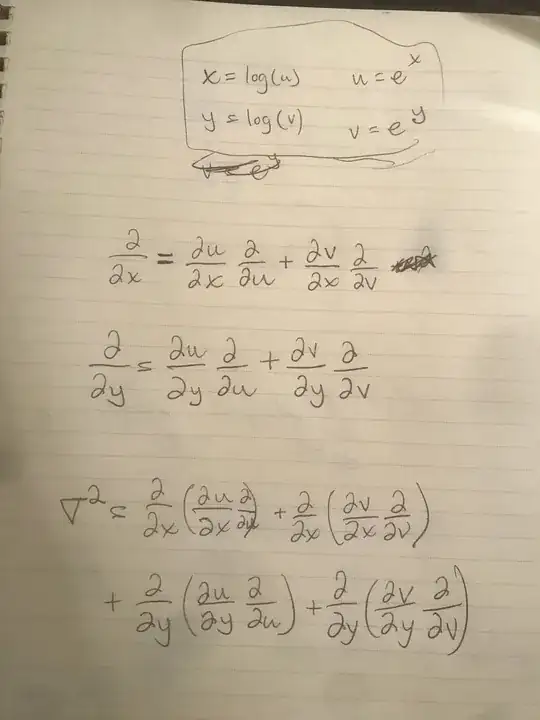Here is a hint:
$$ \frac{\partial}{\partial x}( \frac{\partial u}{\partial x} \frac{\partial f(u,v)}{\partial u}) = \frac{\partial^2 u}{\partial x^2} \frac{\partial f}{\partial u} +( \frac{\partial u}{\partial x} ) \frac{\partial}{\partial x}\left[ \frac{\partial f}{\partial u} \right]$$
Now,
$$ \frac{\partial }{\partial x} (\frac{\partial f}{\partial u}) = [\frac{\partial u}{\partial x} \frac{\partial^2 f}{\partial u^2} + \frac{\partial v}{\partial x} \frac{\partial^2 f } {\partial v \partial u}] \tag{1}$$
To understand this, consider $ \frac{\partial f}{\partial u} = g(u,v)$ then,
$$ \frac{\partial }{\partial x} g(u,v) = \left[ \frac{\partial u}{\partial x} \frac{\partial g}{\partial u} + \frac{\partial v}{\partial x} \frac{\partial g}{\partial v} \right]$$
And then plug back in $ g(u,v) = \frac{\partial f}{\partial u}$
And plug that back in. It's much more easier to track the dependencies when you have an actual function attached than to work with abstract operators. A comment on (1) is that it reminiscent of the parameteric derivative:
$$ \frac{dy}{dx} = \frac{dt}{dx} \frac{dy}{dt}$$
Or, in operator form:
$$ \frac{d}{dx} = \frac{dt}{dx} \frac{d}{dt}$$
The 'trouble' comes when we try to compose the operator that is:
$$ \frac{d^2}{dx^2} = \frac{dt}{dx} \frac{d}{dt} ( \frac{dt}{dx} \frac{d}{dt})$$
The right hand simplfies too:
$$ \frac{dt}{dx} \left[ \frac{d}{dt} (\frac{dt}{dx}) + \frac{d^2 }{dt^2}\right]$$
The confusing term at hand is $ \frac{d}{dt} \frac{dt}{dx}$ similar to $ \frac{\partial}{\partial x}\left[ \frac{\partial f}{\partial u} \right]$ [see here]
